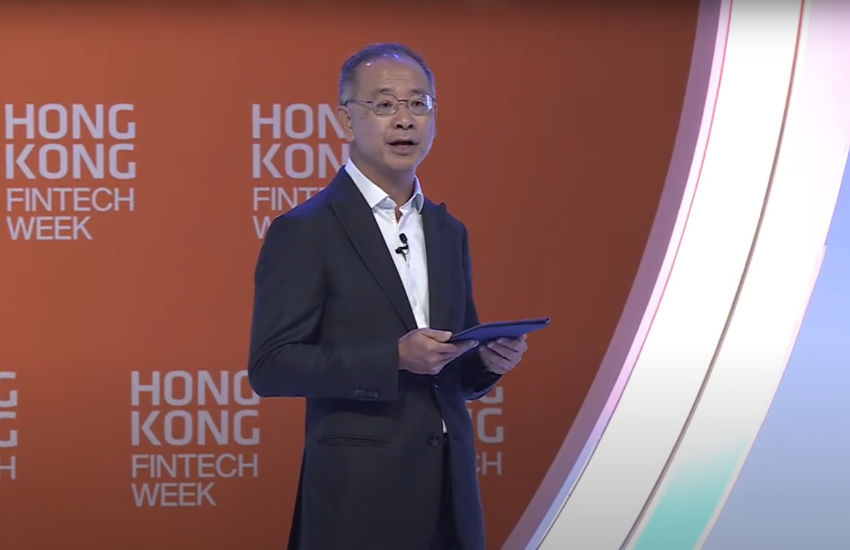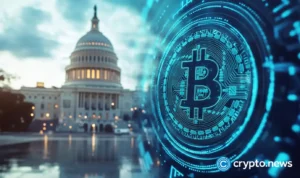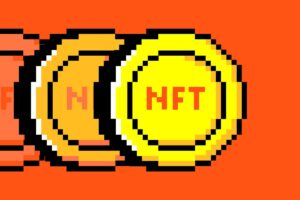In 2024, Hong Kong focuses on stablecoin regulations, crypto tax incentives, and prioritizes tokenization – Ledger Insights reports on blockchain for enterprise

During the opening of the Hong Kong Fintech Week several keynotes covered the topics of stablecoins, cryptocurrency and tokenization. While the Treasury mainly focused on AI, it also covered the planned regulatory program for crypto including tax incentives. Hong Kong Monetary Authority (HKMA) leader Eddie Yue spent considerable time talking about tokenization, and the Securities and Futures Commission (SFC) focused on crypto.
Planned regulations
The Treasury outlined the planned regulatory agenda which includes stablecoin regulations to be released this year, a second digital asset custody consultation next year, as well as a review of the regulation of virtual asset (crypto) over the counter (OTC) trading venues in 2025.
Tax incentives
On the topic of tax incentives, there are two sets of broad tax exemptions in Hong Kong for privately offered funds under the unified fund regime and for family owned investment holding vehicles (FIHVs) for family offices. However, so far only limited asset classes attract tax breaks. There are plans to extend these tax breaks to private credit and virtual assets, amongst others.
SFC director Dr Eric Yip noted that the average age of people trading stocks is over 40, whereas crypto traders are mainly in their twenties. This is one of the drivers of embracing virtual assets. During 2024 Hong Kong has seen the largest growth in virtual asset transaction volumes.
New crypto exchange licensing
There are now three regulated virtual asset trading platforms (VATP), after the approval of the Hong Kong Virtual Asset Exchange earlier this month.
Fourteen VATP applications are pending, including eleven existing venues which were deemed applicants under June rules. The SFC has completed on-site inspections of them all and provided feedback on expected changes. Each VATP must accept those change requests and work on implementing them, after which the SFC will grant the license, but on a restricted operational scope. The SFC expects to license a few deemed applicants this year. To get an unrestricted license, the VATP must go through another third party review process.
Despite highlighting the ‘same risks, same rules’ approach to regulating crypto, Dr Yip also noted the need for the regulator to keep on its toes. “If virtual asset liquidity still resides in unregulated venues after all our efforts, and regulated entities cannot operate a sustainable business model, then we need to reflect on why investors don’t pick our state-of-the-art regulatory framework,” said Dr Yip.
Project Ensemble and tokenization
Dr Yip touched on Project Ensemble, the HKMA tokenization initiative, but Eddie Yue, the CEO of the HKMA discussed it in depth. Apart from the tokenization of investment and other financial assets, Project Ensemble also provides a wholesale CBDC to support the interbank settlement of tokenized deposits. Mr Yue covered some of the use cases announced during the launch of the Project Ensemble sandbox, particularly the tokenization of electronic bills of lading (eBL). The Global Shipping Business Network (GSBN) has partnered with Ant to tokenize some of the eBLs hosted on its blockchain network. Below is an excerpt of Mr Yue’s talk on tokenization, which he said will be a key part of its 2030 agenda which it has not yet unveiled.
Mr Yue’s talk on tokenization
The first area is tokenization, including the idea of the Finternet coined by the BIS. If you don’t know what Finternet is, turn to the annual report of the BIS chapter three. There (it) explains what it is, but let’s make let’s first make clear that tokenization is not the same as crypto assets. There’s been some confusion purely because both are riding on blockchain technology, but don’t mix them up. They’re not the same.
Crypto assets are by nature more speculative and our stance is to let it grow and develop while putting guardrails around it to protect investors. Tokenization on the other hand is an innovative way to record the value and ownership of money and assets in digital form on a programmable ledger and this will make it much easier for individuals corporates and financial institutions to assess and trade these assets, thereby creating a much more inclusive ecosystem that benefits everyone, whoever and wherever they are.
We believe that tokenization has the potential to create hyper connectivity between users, data and services that is essential to drive economic progress and that calls for a visionary shift to align with the constant advances of technology. The BIS has also recently introduced the Finternet concept that I talk about and that envisions an internet like network of interoperable financial ecosystems that places individual and businesses in the heart of financial interactions and that’s very important.
Many of the ideas and concepts from the Finternet in fact resonate very closely with the HKMA’s tokenization project. We envision a future where tokenization integrates seamlessly with both financial and real world assets enabling operations and transactions otherwise impossible with today’s technology.
Now you might be wondering how can something as virtual as tokenization or blockchain, connect with tangible Assets in the real world. Let’s take the example of trade finance. If you are an SME importing goods from overseas, traditionally you face a mountain of paper documents, like bills of lading or invoices. But with tokenized electronic bills of lading you can now transfer this digital asset to a financial institution very easily over the blockchain in exchange for funding.
Unlike a mere PDF copy of bills of lading, this approach allows you to track real-time shipment status on the blockchain, eliminates all the paper documents and also reduces the risk for verification. And importantly for banks, it lowers the fraud risk and we are actively exploring this through our Ensemble Sandbox to resolve frictions in trade finance.
If that is successful, you can imagine that tokenization can actually bring a lot of SMEs into regional and global trade.
Tokenization also ties in with green and sustainable finance, as it may open up new business models and opportunities for businesses and investors. For example, tokenized carbon credit traded on the blockchain can offer better transparency and credibility in carbon data, helping us tackle the issue of double counting which bedevils carbon trading today.
Another example can be found in the infrastructure for the EV industry that Ant is pioneering. By leveraging real-time data from EV charging stations, we can turn the energy generated into a stream of tokenized revenue and that can be sold to institutional investors. We are looking closely at this model because it has the potential to be replicated in various settings, which will help mobilize funds to support the transition into a low carbon economy.
Source link
#Hong #Kong #stablecoin #regulations #crypto #tax #incentives #tokenization #high #priority #Ledger #Insights #blockchain #enterprise




